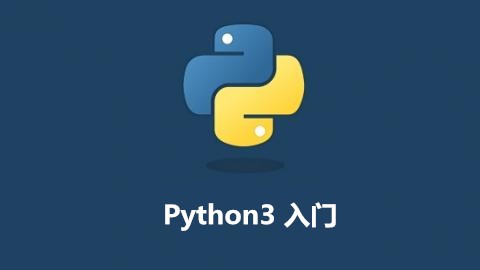Collections模块
collections模块提供了一些python内置数据类型的扩展,比如OrderedDict,defaultdict,namedtuple,deque,counter等,简单实用,非常值得学习了解。
import collections
1. OrderedDict
顾名思义,有顺序的词典,次序不再是随机的。普通的dict不记录插入的顺序,遍历其值的时候是随机的,相反,OrderedDict记录插入的顺序,在迭代的时候可以看出差异。
遍历
print 'Regular dictionary:'d = {}
d['a'] = 'A'd['b'] = 'B'd['c'] = 'C'for key, value in d.items(): print key, valueRegular dictionary: a A c C b B
print 'OrderedDict:'d = collections.OrderedDict() d['a'] = 'A'd['b'] = 'B'd['c'] = 'C'for key, value in d.items(): print key, value
OrderedDict: a A b B c C
相等比较
比较两个词典是否相等,普通词典比较只看内容,内容相同即判定相等为真;而OrderedDict同时会考虑顺序,item被添加的顺序。
print 'dict :',
d1 = {}
d1['a'] = 'A'd1['b'] = 'B'd1['c'] = 'C'd2 = {}
d2['b'] = 'B'd2['a'] = 'A'd2['c'] = 'C'print d1 == d2dict : True
print 'OrderedDict:', d1 = collections.OrderedDict() d1['a'] = 'A'd1['b'] = 'B'd1['c'] = 'C'd2 = collections.OrderedDict() d2['b'] = 'B'd2['a'] = 'A'd2['c'] = 'C'print d1 == d2
OrderedDict: False
2. defaultdict
普通词典,当你访问没有的键值时,会抛出异常,用defaultdict,可以预先给定默认值,尤其默认值是需要做累积或聚合操作的时候(比如计数)。defaultdict接受一个参数default_factory,该函数负责返回特定的值,可以自定义,也可以用list(返回[ ]) set(返回set()) 或int(返回0),直接上例子说的比较清楚。
defaultdict其实是继承dict类后。添加了__missing__(key)方法,用于处理KeyError异常。
def default_factory(): return 'This is default string value'd = collections.defaultdict(default_factory)print d['foo']
This is default string value
这里没有定义d['foo'],但是可以访问,并返回值。下面看点更厉害的!
list
把default_factory设定为list可以方便地把一系列键值对group起来。默认会返回空的list,下面例子把相同的键group在一起。
s = [('yellow', 1), ('blue', 2), ('yellow', 3), ('blue', 4), ('red', 1)]
d = collections.defaultdict(list)for k, v in s:
d[k].append(v) # simpler and faster than d.setdefault(k, []).append(v)d.items()[('blue', [2, 4]), ('red', [1]), ('yellow', [1, 3])]int
计数的时候特别方便,比如要统计每个键值出现多少次。
s = [('yellow', 1), ('blue', 2), ('yellow', 3), ('blue', 4), ('red', 1)]
d = collections.defaultdict(int)for k, v in s:
d[k] += 1d.items()[('blue', 2), ('red', 1), ('yellow', 2)]s = 'mississippi'd = collections.defaultdict(int)for k in s: d[k] += 1d.items()
[('i', 4), ('p', 2), ('s', 4), ('m', 1)]set
和list功能类似,但返回set(),剔除了重复元素。
s = [('red', 1), ('blue', 2), ('red', 3), ('blue', 4), ('red', 1), ('blue', 4)]
d = collections.defaultdict(set)for k, v in s:
d[k].add(v)
d.items()[('blue', {2, 4}), ('red', {1, 3})]3. namedtuple
默认的tuple是用数字做索引的,而namedtuple是可以按名字访问,对fields很多,或者创建和使用场景离得比较远的情况,比较有用。
bob = ('Bob', 30, 'male')print 'Representation:', bob
jane = ('Jane', 29, 'female')print '\nField by index:', jane[0]print '\nFields by index:'for p in [ bob, jane ]: print '%s is a %d year old %s' % pRepresentation: ('Bob', 30, 'male')
Field by index: Jane
Fields by index:
Bob is a 30 year old male
Jane is a 29 year old female由于不同的nametuple不一样,我们要单独定义,同时按name访问(依然可以按数字访问)。
# define namedtuplePerson = collections.namedtuple('Person','name age gender')print 'Type of Person:', type(Person)
bob = Person(name='Bob', age=30, gender='male')print '\nRepresentation:', bob
bob = Person('Bob',30,'male') # also supportedprint 'Representation:', bob
jane = Person(name='Jane', age=29, gender='female')print '\nField by name:', jane.nameprint 'Field by name:', jane[0]Type of Person: <type 'type'> Representation: Person(name='Bob', age=30, gender='male') Representation: Person(name='Bob', age=30, gender='male') Field by name: Jane Field by name: Jane
4. deque
即double-ended queue,双向队列,支持任何一侧的add和remove操作。普通的stack和queue是deque的退化形式。
当然,deque依然是sequence,所以一些列表类似的操作也是支持的。
d = collections.deque('abcdefg')print 'Deque:', dprint 'Length:', len(d)print 'Left end:', d[0]print 'Right end:', d[-1]
d.remove('c')print 'remove(c)', dDeque: deque(['a', 'b', 'c', 'd', 'e', 'f', 'g']) Length: 7Left end: a Right end: gremove(c) deque(['a', 'b', 'd', 'e', 'f', 'g'])
populating
往队列push元素
import collections# Add to the rightd = collections.deque()
d.extend('abcdefg') # append with elements from the iterableprint 'extend :', d
d.append('h')print 'append :', d# Add to the leftd = collections.deque()
d.extendleft('abcdefg')print 'extendleft:', d
d.appendleft('h')print 'appendleft:', dextend : deque(['a', 'b', 'c', 'd', 'e', 'f', 'g']) append : deque(['a', 'b', 'c', 'd', 'e', 'f', 'g', 'h']) extendleft: deque(['g', 'f', 'e', 'd', 'c', 'b', 'a']) appendleft: deque(['h', 'g', 'f', 'e', 'd', 'c', 'b', 'a'])
consuming
从双向队列pop元素。
print 'From the right:'d = collections.deque('abcdefg')while True: try: print d.pop(), except IndexError: breakFrom the right: g f e d c b a
print '\nFrom the left:'d = collections.deque('abcdefg')while True: try: print d.popleft(), except IndexError: breakFrom the left: a b c d e f g
5. Counter
计数器,顾名思义。构造器接受以下形式,实现初始化。
print collections.Counter(['a', 'b', 'c', 'a', 'b', 'b'])print collections.Counter({'a':2, 'b':3, 'c':1})print collections.Counter(a=2, b=3, c=1)Counter({'b': 3, 'a': 2, 'c': 1})
Counter({'b': 3, 'a': 2, 'c': 1})
Counter({'b': 3, 'a': 2, 'c': 1})update
c = collections.Counter()print 'Initial :', c
c.update('abcdaab')print 'Sequence:', c
c.update({'a':1,'d':5}) # increse not replaceprint 'Dict :', c # add to a and dInitial : Counter()
Sequence: Counter({'a': 3, 'b': 2, 'c': 1, 'd': 1})
Dict : Counter({'d': 6, 'a': 4, 'b': 2, 'c': 1})访问
访问时候利用和字典一样的API。但对于没有的键,不会抛出异常,而是计数为0。
c = collections.Counter('abcdaab')for letter in 'abcde': print '%s : %d' % (letter, c[letter])a : 3 b : 2 c : 1 d : 1 e : 0
elements
产生包含所有元素的一个迭代器。
c = collections.Counter('China')
c['z'] = 0print cprint list(c.elements())Counter({'a': 1, 'C': 1, 'i': 1, 'h': 1, 'n': 1, 'z': 0})
['a', 'C', 'i', 'h', 'n']most_common()
返回前n个最常见的。
c = collections.Counter('abcdaab')
c.most_common(2)[('a', 3), ('b', 2)]
作者:米乐乐果
链接:https://www.jianshu.com/p/cac9af8bd96d

 随时随地看视频
随时随地看视频




